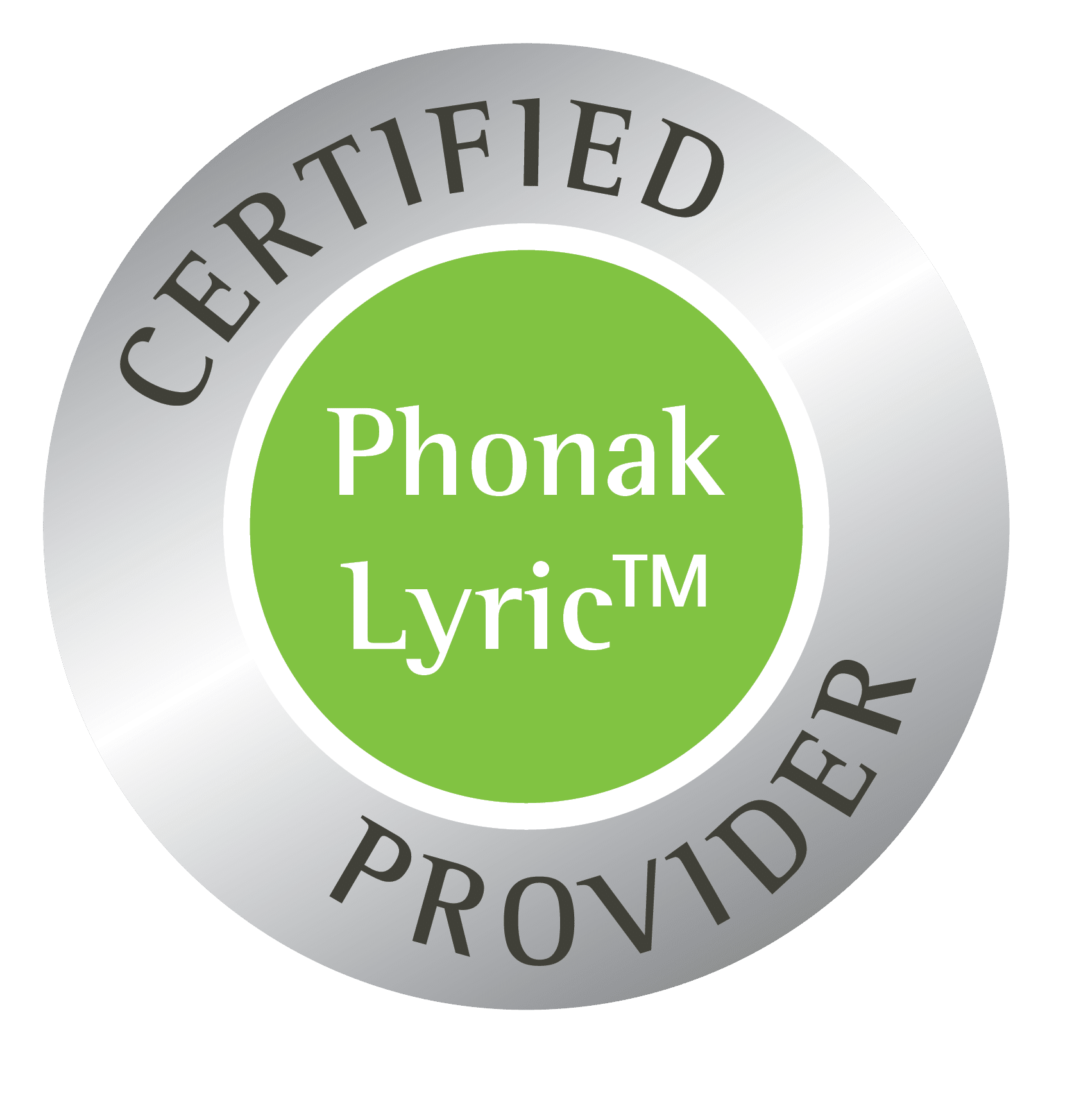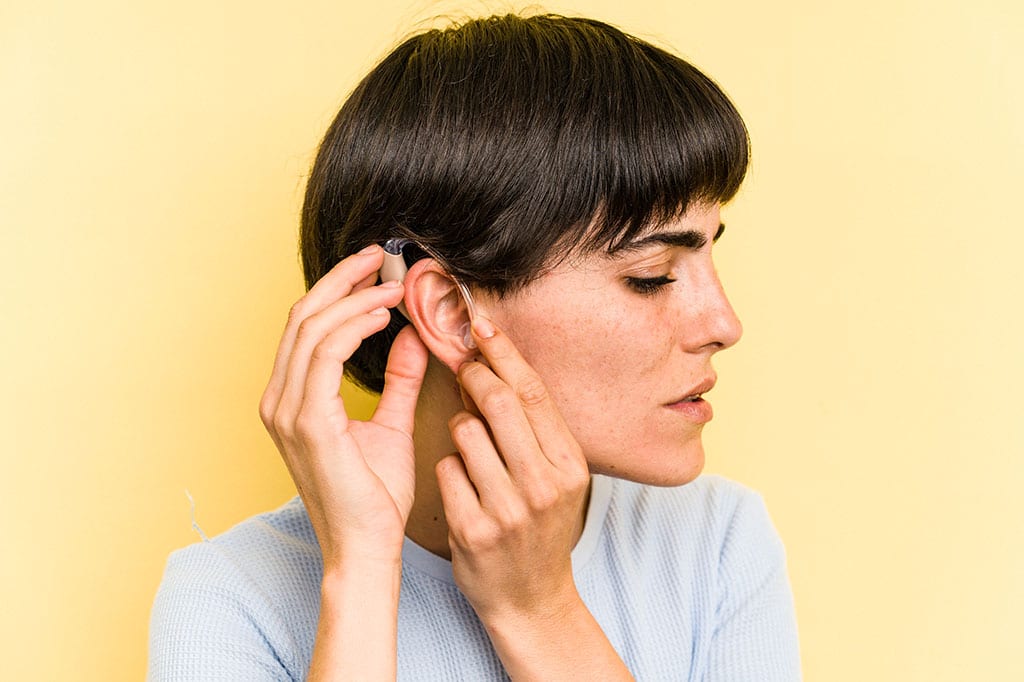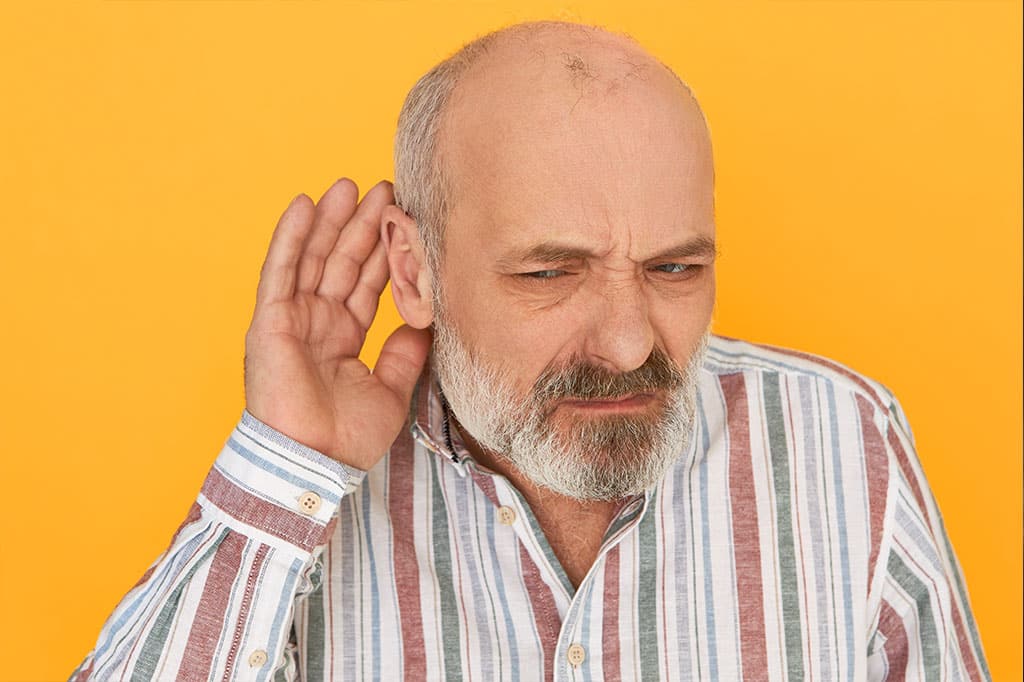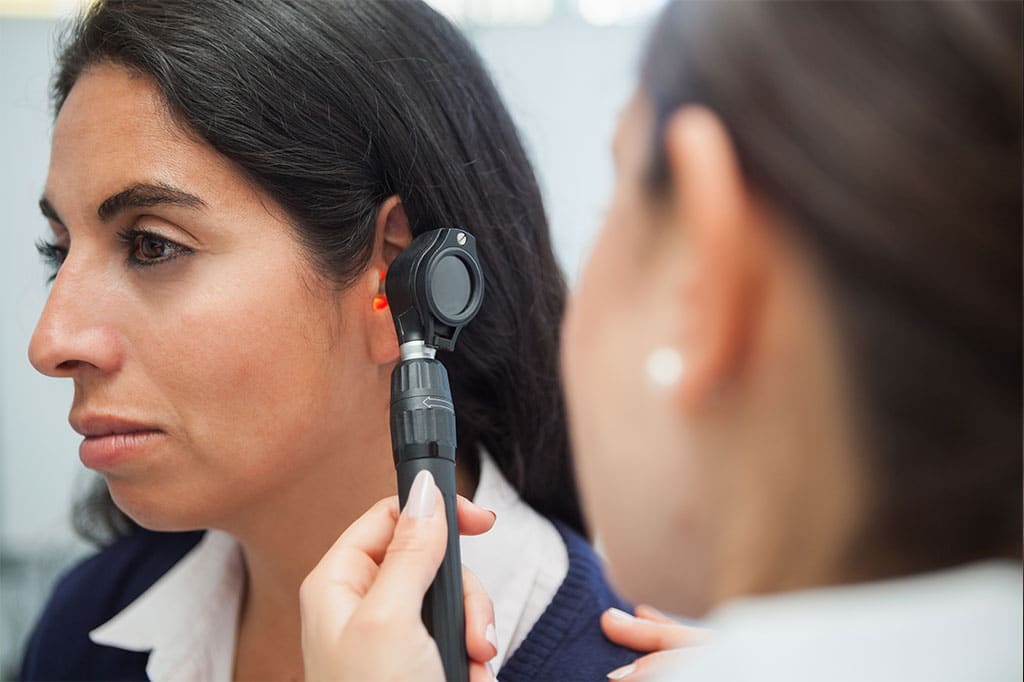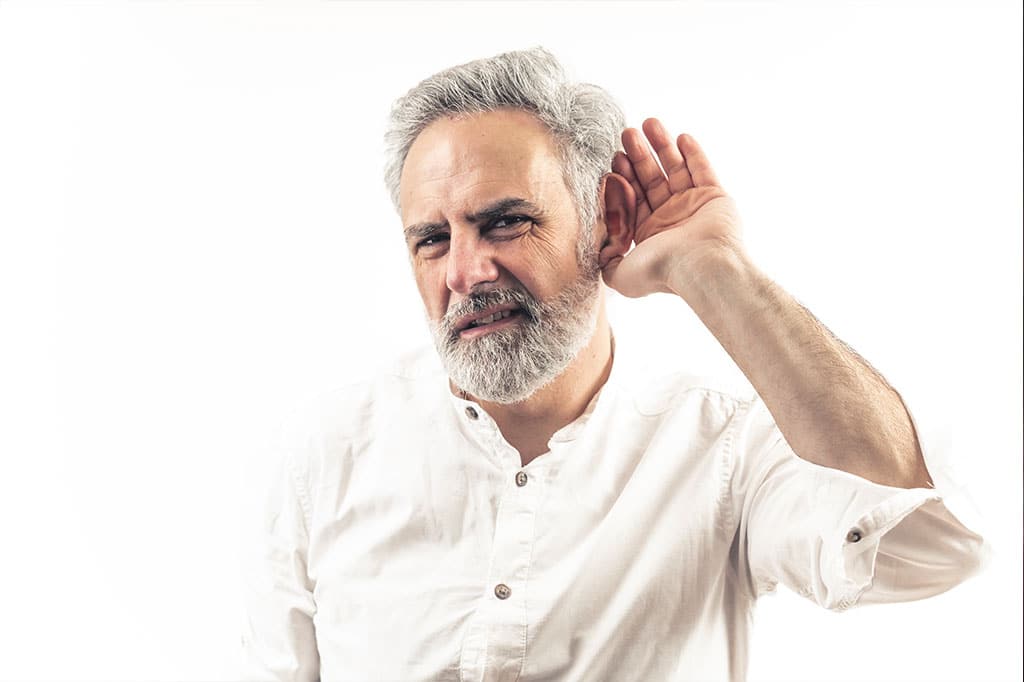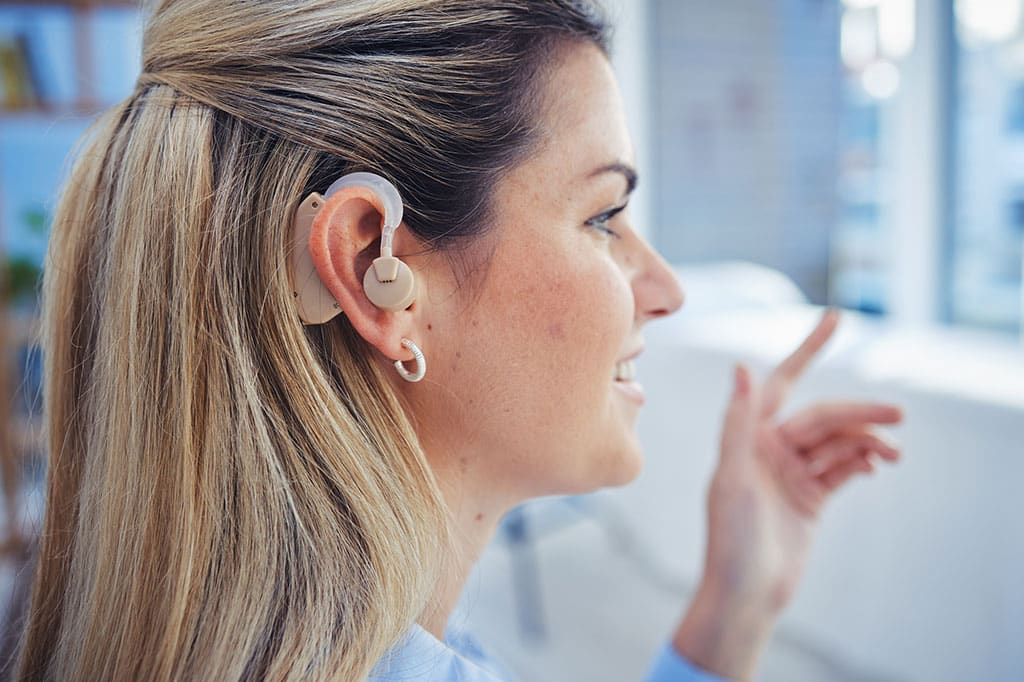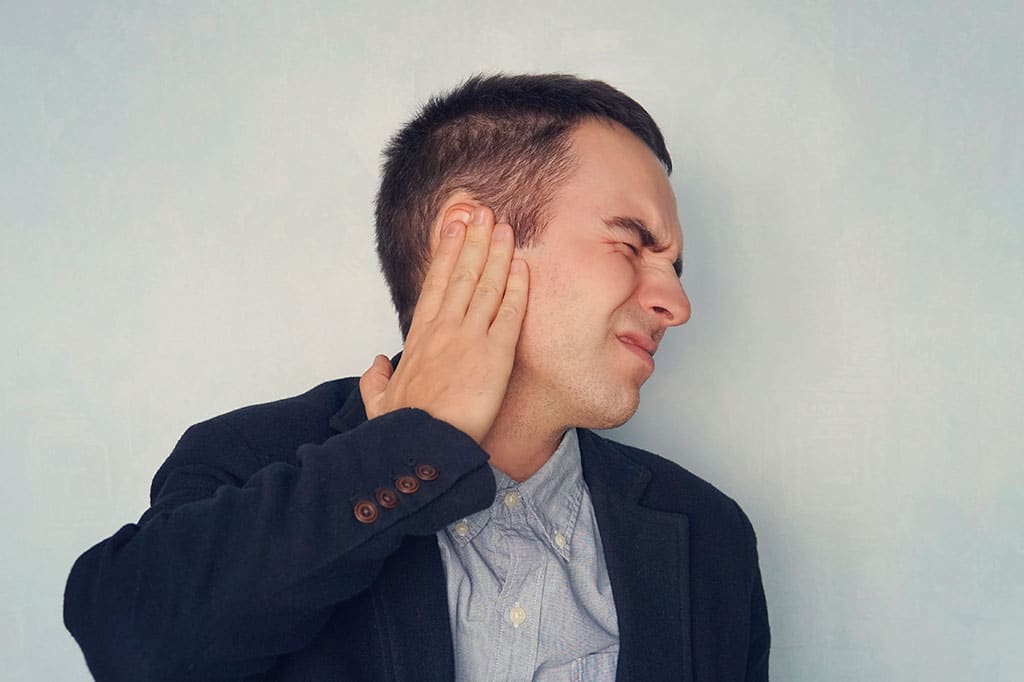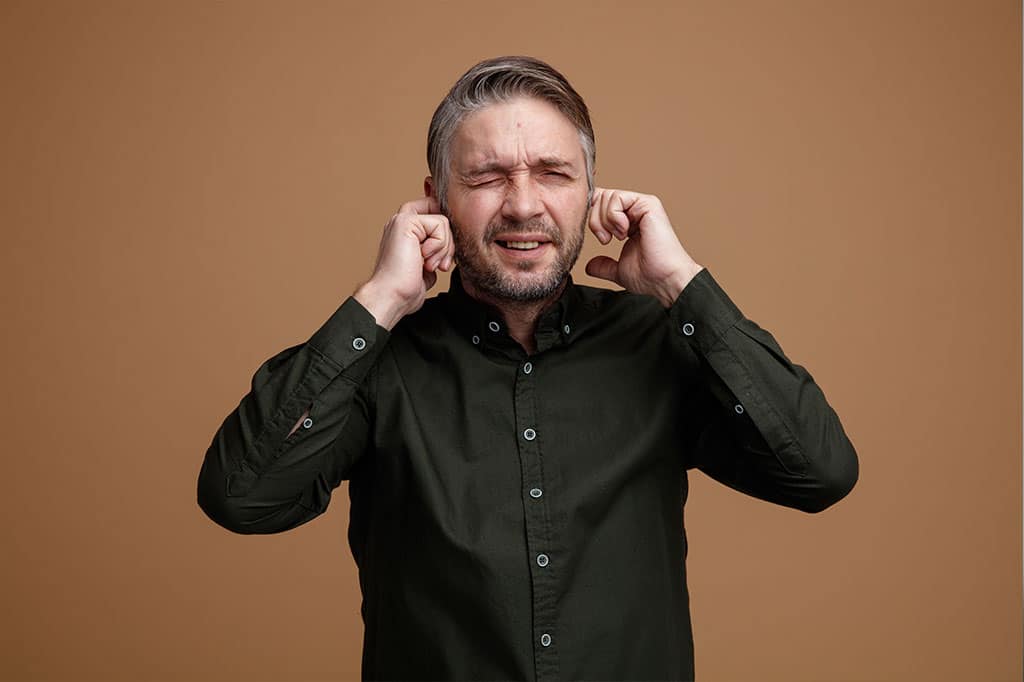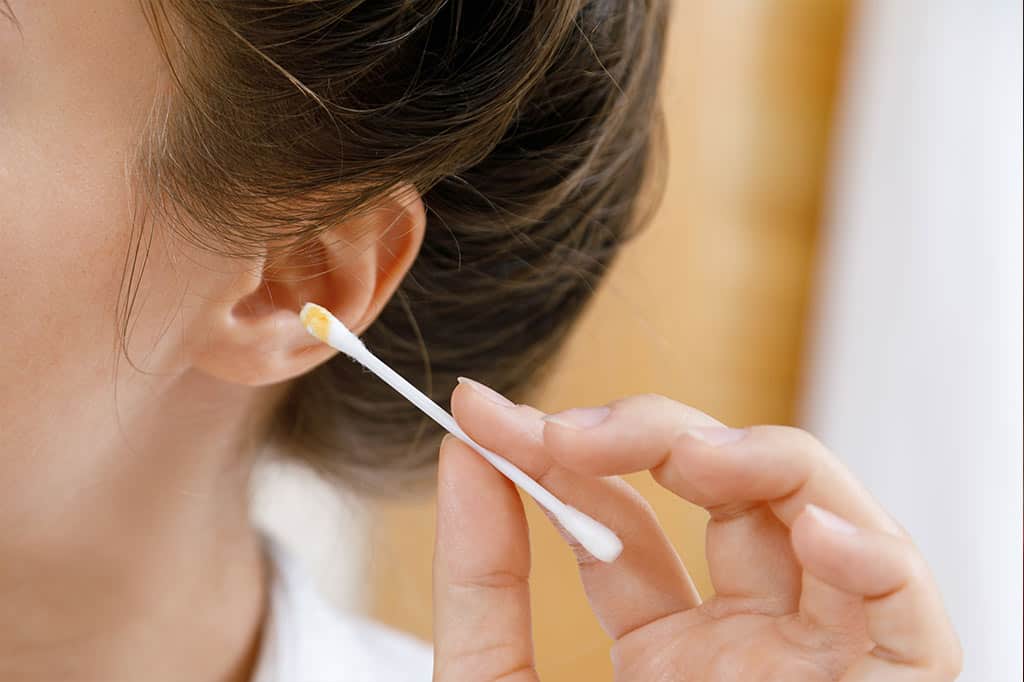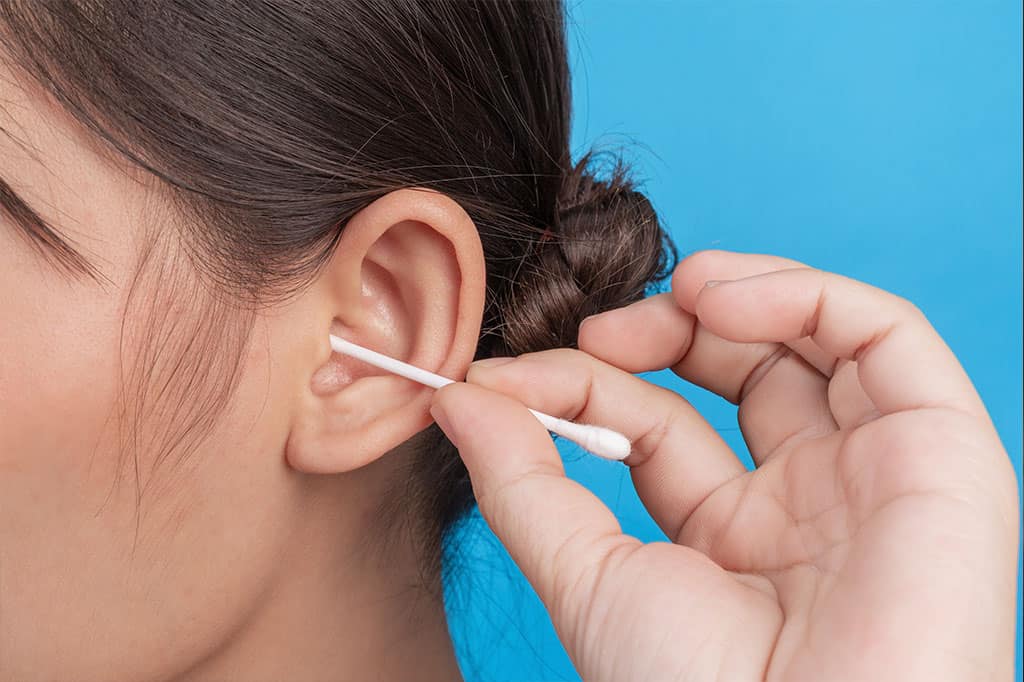Are you or a loved one dealing with hearing loss?
In this guide, we’ll break down two types of hearing impairment:
- Conductive hearing loss
- Sensorineural hearing loss
Conductive hearing loss occurs when sound waves struggle to travel efficiently through the outer or middle ear. It could stem from various causes, such as ear infections, earwax buildup, or abnormalities in the ear structure.
While it may affect sound transmission, damage is often reversible with proper treatment.
Sensorineural hearing loss involves damage to the inner ear or auditory nerve pathways to the brain. This type is usually permanent and can be caused by ageing, exposure to loud noises, genetic predisposition, or certain medical conditions.
Sensorineural impairment affects the ability to perceive sound accurately, often resulting in difficulties with speech recognition and understanding.
Understanding the distinction between these two types is crucial in seeking appropriate treatment and management strategies.
In this article, we delve deeper into the nuances of conductive vs sensorineural hearing loss, exploring their causes, symptoms, diagnosis, and available treatments.
Comparative Analysis
Both present unique challenges and opportunities, making it essential to evaluate them across various factors to determine the most suitable solution.
Comparison Factor | Conductive Hearing Loss | Sensorineural Hearing Loss | Outcomes | Often reversible with medical intervention, providing prompt relief from symptoms. | May require long-term rehabilitation and adaptation strategies due to its irreversible nature. |
|---|---|---|
Cost | Costs may vary depending on the underlying cause and required treatment, ranging from affordable to expensive. | The cost of treatment varies extensively. Fully subsidised options are available to eligible pensioners and veterans. For those who are self-funded, costs vary depending on the devices chosen. Private health insurance may be used to cover some of these costs. |
Durability and Lifespan | Treatment outcomes can vary; some cases may require ongoing management, while others may result in permanent resolution. | With proper care and maintenance, hearing aids and implants can offer years of reliable performance. |
Aesthetics | Very varied depending on the treatment required. | Modern hearing aid designs prioritise discretion and aesthetics, minimising visibility. |
Environmental Impact | Minimal environmental impact associated with medical interventions or hearing aids. | Hearing devices with traditional disposable batteries have a higher environmental impact than those with rechargeable batteries. |
People facing conductive hearing impairment may benefit from prompt medical intervention, which can often reverse the condition and provide immediate relief.
Those dealing with sensorineural hearing impairment may require long-term rehabilitation and adaptation strategies, with treatments such hearing aids offering effective solutions but at a potentially higher cost.
Individuals should see an Audiologist to determine whether their hearing loss is conductive or sensorineural. Treatment options will then be discussed so clients can make an informed decision about their treatment plan.
Get The Facts >>> Causes & Signs of Hearing Loss
Are There Any Government Incentives and Subsidies?
If you’re dealing with a hearing impairment, you may find relief through various government incentives and warranties tailored to your needs.
Conductive Hearing Loss:
The Australian Government provides subsidies for medical procedures aimed at treating conductive hearing loss, such as ear surgeries or the removal of earwax buildup.
These subsidies can significantly reduce the financial burden associated with treatment.
Sensorineural Hearing Loss:
The Australian Government’s Hearing Services Program offers eligible individuals access to free or subsidised hearing assessments and devices, including hearing aids.
This program aims to improve access to essential hearing services for those experiencing sensorineural hearing impairment.
Tailoring Solutions: Choosing the Right Fit for You
It’s essential to consider your specific circumstances and requirements.
Conductive Hearing Loss:
- Acute Cases: For individuals with acute conductive hearing impairment resulting from conditions such as ear infections or earwax buildup, prompt medical intervention is often the preferred course of action. Medical treatments can offer swift relief and potential resolution of the underlying issue.
- Temporary Obstructions: It is caused by temporary obstructions in the outer or middle ear, such as earwax buildup, which may be effectively addressed through procedures like micro-suction. This non-invasive solution can restore hearing function without the need for extensive medical intervention.
Conductive Hearing Loss: Symptoms, Causes and Treatment
Sensorineural Hearing Loss:
- Chronic Conditions: Typically stemming from damage to the inner ear or auditory nerve pathways, it often requires long-term management and rehabilitation. Treatments such as cochlear implants or hearing aids provide significant improvements in hearing function.
- Age-Related Hearing Loss: As an age-related condition (presbycusis) progresses gradually over time, individuals may benefit from early intervention with hearing aids or assistive devices to mitigate the impact of deteriorating hearing function. These devices can offer ongoing support and adaptation as hearing abilities change with age.
By consulting with healthcare professionals and considering these factors carefully, individuals can make informed choices that align with their unique needs and circumstances.
Final Thoughts and What to Do Next
Let’s recap the main differences we’ve covered so far to help you navigate towards the most suitable solution for your needs:
Conductive Hearing Loss:
- Often reversible with medical intervention, offering prompt relief. Hearing preservation is possible.
- Temporary relief may necessitate ongoing management. Hearing devices may be required.
Sensorineural Hearing Loss:
- Long-term solutions are available, such as cochlear implants or hearing aids. Comprehensive rehabilitation programs are offered.
- Permanent damage leads to challenges with speech recognition.
When considering which type of solution is right for you, it’s essential to assess your specific circumstances and preferences:
- Consider the Cause: If your hearing impairment is temporary or reversible, such as ear infections or obstructions, conductive hearing impairment solutions may offer quick relief. On the other hand, if your condition is chronic or age-related, sensorineural solutions may be more suitable for long-term management.
- Evaluate Lifestyle Needs: Assess your lifestyle and daily activities to determine the level of hearing aid technology you may require. Those who swim regularly or enjoy being around water may benefit from waterproof or sweatproof technology.
- Consult with Professionals: Seek guidance from audiologists or otolaryngologists to evaluate your hearing impairment and explore the most appropriate treatment options. These experts can provide personalised recommendations based on your individual needs and preferences.
Take the Next Step with Hearing and Audiology
Contact Hearing & Audiology today for personalised advice and solutions tailored to your unique needs.
Whether you’re seeking guidance on addressing conductive or sensorineural hearing impairment, our team of experts is here to help.
Reach out for a consultation or a quote, and let’s work together to bring the joy of sound back into your life.
Access more resources here:

